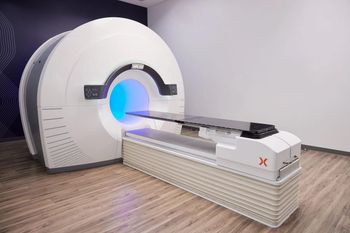
Reimbursement Challenges in Radiology: an Interview with Richard Heller, MD
In a recent interview at the annual RSNA conference in Chicago, Richard Heller, MD discussed the impact of reduced reimbursement rates in radiology, the projected CMS conversion factor for 2024, the severity of payment cuts in interventional radiology and the importance of radiologist advocacy.
Despite significant demand for radiologist services, Richard Heller, MD, noted that declining radiology reimbursement amid a backdrop of significant workforce shortages have created a “perfect storm” of stress for radiologists.
“We’ve got this demand coupled with a capacity limitation but at the same time we’re facing that, we’re also facing downward pressure on our reimbursement both from public payers like Medicare and commercial health-care payers,” explained Dr. Heller, the associate chief medical officer for Health Policy and Communications with Radiology Partners, during a recent interview at the annual RSNA conference in Chicago. “We’re doing all of this at a time of inflation. … At the same time you’re feeling overwhelmed with the (imaging) volume and demand, you’re getting paid less for that work.”
Based on 2024 projections of the conversion factor set by the Centers for Medicare and Medicaid Services (CMS) for Medicare reimbursement, declining radiologist reimbursement may become significantly worse.
“CMS has finalized a conversion factor for 2024 that would be lower than the conversion factor they used in 1994,” emphasized Dr. Heller. “To be clear, I’m not talking about inflation. The actual dollar value that CMS intends to pay doctors with in 2024 is lower than it was 30 years earlier in 1994.”
(Editor’s note: For related content, see “
Dr. Heller added that interventional radiology is projected to take the biggest CMS reimbursement cuts of any specialty in 2024.
“You’re disincentivizing investments in and disadvantaging a specialty, which I think we would all agree is minimally invasive and cost-effective,” maintained Dr. Heller. “It’s counterintuitive to disadvantage a specialty like interventional radiology, which actually improves the value of health care delivery.”
For more insights from Dr. Heller, watch the video below.
Newsletter
Stay at the forefront of radiology with the Diagnostic Imaging newsletter, delivering the latest news, clinical insights, and imaging advancements for today’s radiologists.




























